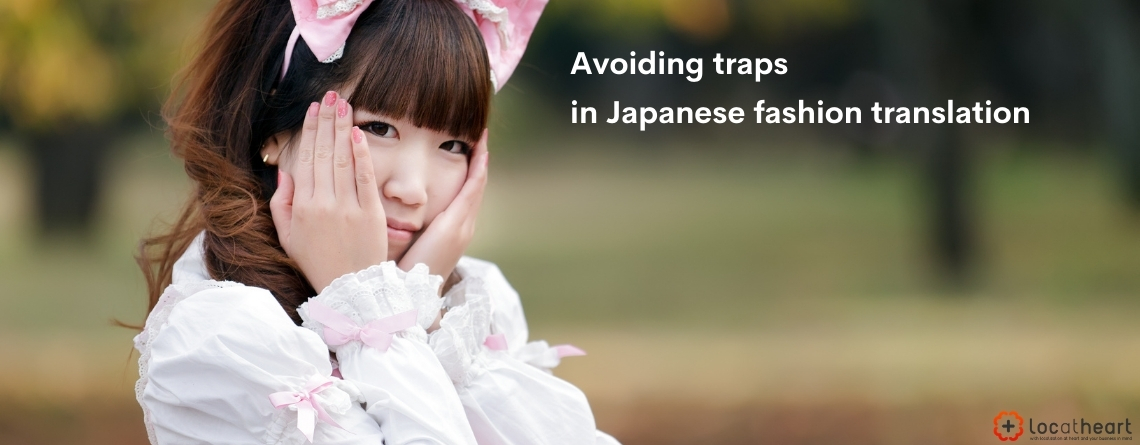The language of Japanese fashion
Japan is often presented as a land that virtually overflows with shocking (from a foreigner’s point of view) trends and fashion phenomena – curiously enough, however, Japanese culture has a lot in common with the Western one. The Japanese are keen to incorporate Western trends into their designs – but they give them a unique character, mould them according to their own idiosyncratic standards and inspire others around the globe with their own brilliant concepts and ideas.
It goes without saying, therefore, that to get your bearings in the world of Japanese fashion, it would be worthwhile to start from some of the most notable styles.
Japanese fashion styles explained
Kogal
A universally recognised trend – but one that has been losing in popularity over the past few years – is the “high school girl” style. The main element of the outfit is, understandably, a school uniform (the shorter the skirt, the better), typically combined with scarves and long, usually loose socks. The overall look is complemented with cute accessories such as headbands with ears, glitter phone cases, fluffy key chains or adorable earphones. Ring a bell?
Note! Those choosing the kogal style refer to themselves as gyaru.
Gyaru
It’s an urban fashion trend that draws heavily from the Western fashion sense. One of the strongest inspirations for this style was the famous “Baywatch” TV series, and especially the actress Pamela Anderson. Gyaru tend to opt for bleached hair, strong tan, gaudy manicure, false eyelashes and dramatic make-up, whereas their clothes and accessories may sometimes evoke associations with the Western club culture.
Note! The golden age of this trend is already over. Teenagers and young adults have been leaning towards other styles instead, and the word gyaru itself has started to shift its meaning to denote slightly older women who show little interest in work or marriage.
Mori kei
Is the mori girl a counterpart of the Polish autumnerd*? To start off, the Japanese mori kei trend came to life as early as 2007 and is not dictated by the seasons. Additionally, the centre of its “stylish” gravity seems to be placed elsewhere – mori girls are sometimes referred to as “forest girls” and they seem to live up to their name by choosing organic fabrics and materials. The trend itself differs from the Polish one in terms of historical background, cultural references and lifestyle implications, as well as the extent to which it has evolved and influenced the daily habits of its pursuers. What mori girls do share with the Polish autumnerds, however, is their love for pastel colours and oversized jumpers, blouses or dresses, as well as a strong propensity for putting on multiple (most often loose) layers of clothing, including all kinds of shawls or scarves. The representatives of both styles are also known to gladly reach for subtle details such as ribbons or lace.
Note! Mori kei is often mixed up with natural kei, a style popular in the 1970s, inspired by Anne of Green Gables and the TV show Little House on the Prairie, as both trends share a number of discernible traits.
Lolita
The Lolita style, based on the outfits from the Victorian era, has thrived in Japan for years. While its popularity may seem perplexing to the observers of the Japanese culture, one of the possible explanations for the surprising prevalence is quite straightforward – an outfit that the Western world considers a historical (and thus not necessarily appealing) costume may simply seem exotic in Asia. Thus, the Japanese seem to eagerly adapt such elements as elegant trousers with suspenders, flared dresses adorned with ruffles, bows, ribbons and lace, as well as complementary accessories like bonnets, top hats, neckties, sun umbrellas or gloves. The style has lived to see its multiple subtypes (e.g. Gothic Lolita, Sweet Lolita or Punk Lolita).
Note! The trend has nothing to do with the famous 1955 novel by Nabokov.
Streetwear
Japan – just like numerous other countries – carefully observes global trends and creates its own ones. And it is precisely the diversified streetwear that is now one of the most prominent trends there. The Japanese tend to experiment with bright colours, jumpsuits or oversized trousers, and they are not afraid to play with form or proportions.
Fashion translation is a field for experts
Talking or writing about Japanese fashion requires a great deal of precision and boldness, as trends and styles there come to life suddenly, without prior notice – they intermingle, evolve, diverge from one another and then fuse again, only to fade out, yielding place to their successors and waiting for their turn to be revived yet again.
Each subculture or even its name sparks off a whole gamut of unique associations and elusive meanings that additionally undergo change with the passage of time. As such, it would be advisable not to treat the Japanese fashion jargon offhandedly. Just as the example with the word gyaru might have shown, it is relatively easy to cause misunderstandings – heaping praise on a bold outfit may come off as criticising somebody’s lifestyle.
Even though at times Japanese fashion may seem bizarre or even unworldly, a careless approach to the translation can lead to some serious troubles. It would be better to leave such translation to professionals.
* The newly coined Polish slang term, jesieniara, denotes a girl who loves autumn and usually lets it show through specific clothing, accessories and choice of pastimes. The term has slightly pejorative connotations.







Leave a Reply